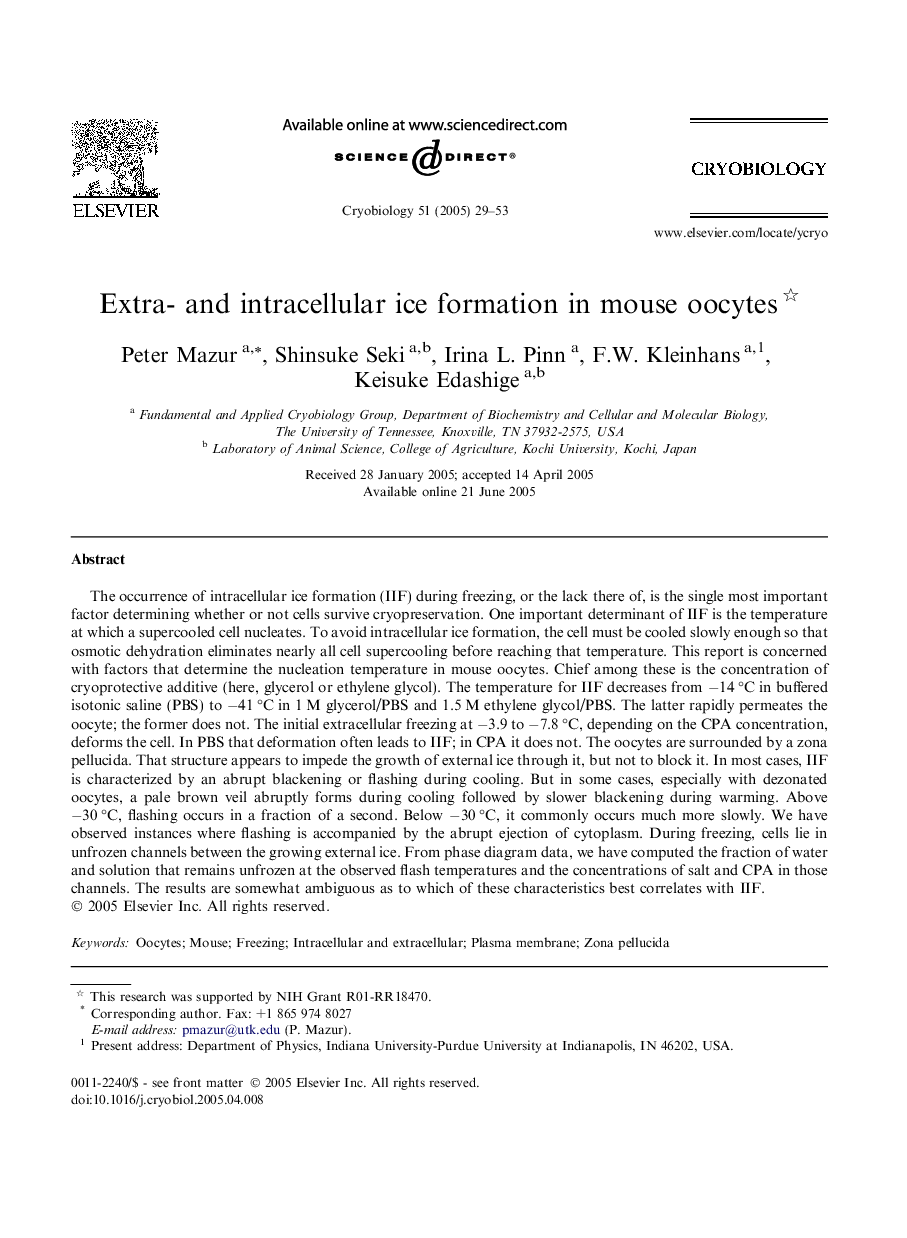| کد مقاله | کد نشریه | سال انتشار | مقاله انگلیسی | نسخه تمام متن |
|---|---|---|---|---|
| 10928610 | 1092930 | 2005 | 25 صفحه PDF | دانلود رایگان |
عنوان انگلیسی مقاله ISI
Extra- and intracellular ice formation in mouse oocytes
دانلود مقاله + سفارش ترجمه
دانلود مقاله ISI انگلیسی
رایگان برای ایرانیان
کلمات کلیدی
موضوعات مرتبط
علوم زیستی و بیوفناوری
علوم کشاورزی و بیولوژیک
علوم کشاورزی و بیولوژیک (عمومی)
پیش نمایش صفحه اول مقاله

چکیده انگلیسی
The occurrence of intracellular ice formation (IIF) during freezing, or the lack there of, is the single most important factor determining whether or not cells survive cryopreservation. One important determinant of IIF is the temperature at which a supercooled cell nucleates. To avoid intracellular ice formation, the cell must be cooled slowly enough so that osmotic dehydration eliminates nearly all cell supercooling before reaching that temperature. This report is concerned with factors that determine the nucleation temperature in mouse oocytes. Chief among these is the concentration of cryoprotective additive (here, glycerol or ethylene glycol). The temperature for IIF decreases from â14 °C in buffered isotonic saline (PBS) to â41 °C in 1 M glycerol/PBS and 1.5 M ethylene glycol/PBS. The latter rapidly permeates the oocyte; the former does not. The initial extracellular freezing at â3.9 to â7.8 °C, depending on the CPA concentration, deforms the cell. In PBS that deformation often leads to IIF; in CPA it does not. The oocytes are surrounded by a zona pellucida. That structure appears to impede the growth of external ice through it, but not to block it. In most cases, IIF is characterized by an abrupt blackening or flashing during cooling. But in some cases, especially with dezonated oocytes, a pale brown veil abruptly forms during cooling followed by slower blackening during warming. Above â30 °C, flashing occurs in a fraction of a second. Below â30 °C, it commonly occurs much more slowly. We have observed instances where flashing is accompanied by the abrupt ejection of cytoplasm. During freezing, cells lie in unfrozen channels between the growing external ice. From phase diagram data, we have computed the fraction of water and solution that remains unfrozen at the observed flash temperatures and the concentrations of salt and CPA in those channels. The results are somewhat ambiguous as to which of these characteristics best correlates with IIF.
ناشر
Database: Elsevier - ScienceDirect (ساینس دایرکت)
Journal: Cryobiology - Volume 51, Issue 1, August 2005, Pages 29-53
Journal: Cryobiology - Volume 51, Issue 1, August 2005, Pages 29-53
نویسندگان
Peter Mazur, Shinsuke Seki, Irina L. Pinn, F.W. Kleinhans, Keisuke Edashige,